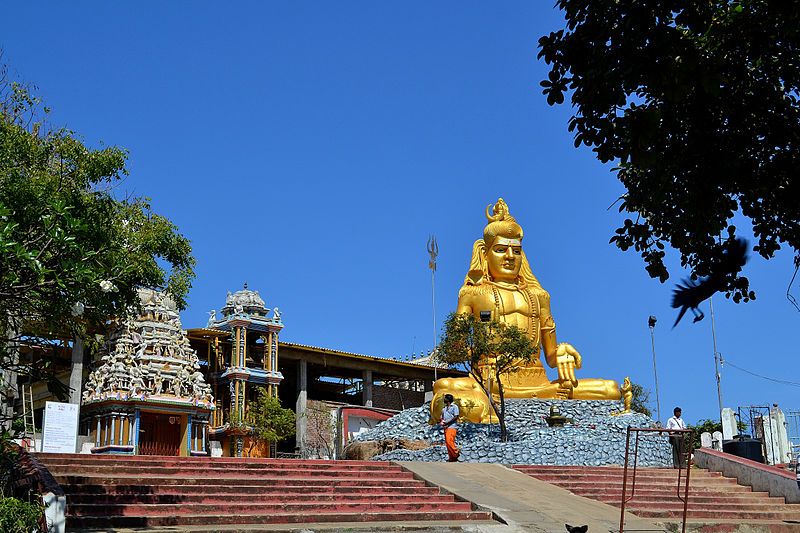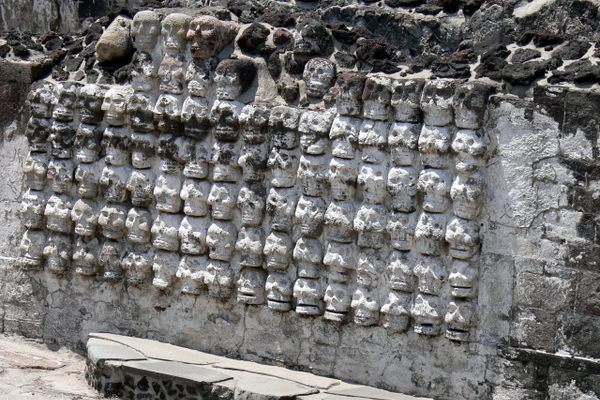About
On a spectacular promontory overlooking one of the world’s largest natural harbours, there is an ancient temple dedicated to the Hindu god Shiva. It is at the head of Konesar Malai (Swami Rock) on the dramatic Gokarna Bay, a seasonal home to blue whales.
Surrounded by jaw-dropping scenery on all sides, the colourful Koneswaram temple sits high above the bay, a classical-medieval complex in the Eastern Province city of Trincomalee. The site is a religious pilgrim centre, and is one of the five “Pancha Ishwarams” (abodes of Shiva) that were built in coastal regions of Sri Lanka to honor the supreme god of Hinduism.
The dates of the temple have been debated, with some scholars citing the original to around 400 BC, and later construction from as early as the 5th century to as late as the 18th.
At one time the complex was as large and grand as any in India or Sri Lanka. The grandeur was mostly lost in the 17th century at the hands of the colonial Portuguese, who razed structures, dumped some into the sea, destroyed objects, and smashed ornamentation. To salvage what they could, priests and devotees of the temple scrambled to bury their sacred objects, even taking advantage of the sea itself rather than seeing them crushed in the raid.
The original temple is claimed by some to have been the greatest building of its age, for both its architecture and its ornamentation. It combined key features to form a typically southern Indian plan, such as a thousand-pillared hall (similar to the famous “Aayiram Kaal Mandapam” in Madurai, India) and raised platform (or “jagati”) configuration, features that had been destroyed. It was said that its gopuram (gateway tower) was visible to sailors approaching Sri Lanka from the sea.
The evidence for this magnificence comes from unearthing the very remnants that were buried, as well as the discovery of key pieces at the bottom of the bay. They were found by photographer Mike Wilson and science-fiction author, Arthur C. Clarke. In 1956, Wilson and Clarke uncovered masonry, idol images, carved columns with flower insignias, and elephant head carvings while scuba-diving. More importantly, they also retrieved the legendary Swayambhu lingam; a large stone phallus / obelisk said to originate from a Tibetan mountain top. Upon reinstalling the lingam to the temple, Wilson was so overwhelmed by the experience that he renounced his career and family to become a Hindu swami.
As well as the recovered underwater pieces, there are also some original drawings done by Constantino de Sá de Noronha, the Portuguese governor responsible for the destruction.
Restoration work was completed in 1963 with the old pieces reinstalled. Today the site is reborn, and there is some quite modern construction as well. And while the current site does not match up to the pre-1624 temple, it is still an awe-inspiring place to visit, for Hindus and non-Hindus alike.
Related Tags
Know Before You Go
The temple is on the northeastern coast of Sri Lanka, at the very end of Konesar Road. Continue past Fort Frederick (currently an army base, and formerly a British colonial fort) and follow the path lined with shops. You’ll walk through various courtyard shrines, eventually reaching the giant statue of Shiva at the promontory. The temple requests all visitors to please respect the religious customs and propriety, including appropriate dress. Be prepared to remove your shoes.
Published
November 21, 2016




































